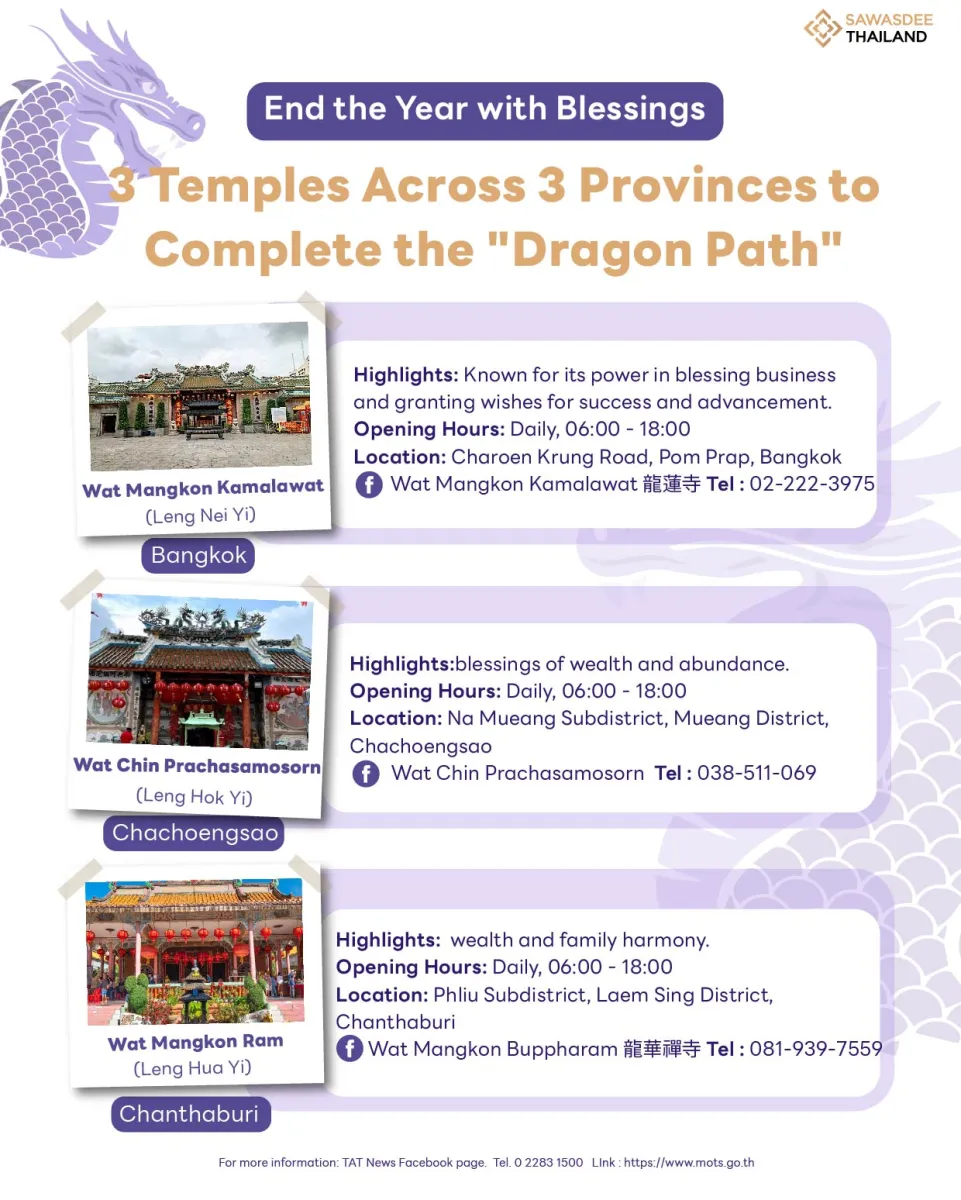
1. Wat Mangkon Kamalawat (Leng Nei Yi) - Bangkok
Known as the "Dragon’s Head Temple," this temple is officially under the Chinese sect since 1871. Located on Charoen Krung Road in Bangkok’s Chinatown district, it’s believed that worshipping at this temple represents a dragon ascending to the heavens, symbolizing a pure mind and prosperity.
2. Wat Chin Prachasamosorn (Leng Hok Yi) - Chachoengsao
Known as the "Dragon’s Belly Temple," Wat Chin Prachasamosorn is the only Chinese temple in Chachoengsao, founded in 1906 and later given its current name by King Rama V. The "dragon’s belly" signifies abundance and wealth, it is believed that those who visit this temple will enjoy prosperity and plentiful food for their families.
3. Wat Mangkon Ram (Leng Hua Yi) - Chanthaburi
The "Dragon’s Tail" is located at Wat Leng Hua Yi, a Mahayana Buddhist temple under the Chinese sect, established in 1977. This is the third dragon temple after Wat Mangkon Kamalawat in Bangkok and Wat Chin Prachasamosorn in Chachoengsao. “Hua” means flower, hence its alternate name, “Temple of the Dragon’s Floral Paradise.”
Those who visit Leng Nei Yi in Bangkok, Leng Hok Yi in Chachoengsao, and finally Leng Hua Yi en route to Phlio Waterfall in Chanthaburi complete the “Dragon Path” in its entirety. Seek blessings from deities such as Tai Sui and Cai Shen, along with various Taoist and Chinese deities for auspicious fortune. Completing this path is believed to lead to inner peace and a positive mindset, ensuring happiness in all aspect of life.